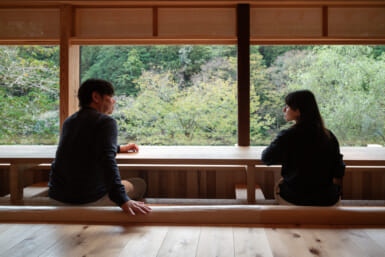Wine writers bother me — professional ones, that is — and so I’m exempt. I read their articles with emotions varying from slight annoyance to indignation to outrage, although on rare occasions I find some that are informative, making them a pleasure to read.
I am slightly annoyed with the pedagogical types who write as though their audience knows less than they do and give out in detail which foods go with what wines, as though that’s possible. To me it’s an exercise in wasted ignorance. I become indignant with those who deliver their opinions with the authority of a Supreme Court justice and dot their descriptions with references to flowers, fruits and herbs. They make up in vague words and phrases what they lack in knowledge. My outrage is reserved for those who set themselves up as great wine gurus and yet open themselves up for the world to view their ignorance by making an egregious factual error, one that can not be attributed to carelessness.
To give a specific case, I was particularly outraged recently when I read an article by an Anthony Dias Blue in some so-called prestigious magazine which devotes considerable space to wine. The error he committed was of such proportions that to exercise professional courtesy would be a crime against wine-drinkers.
The article was devoted to Texas wines, and Blue gave them good marks, I have no argument with that. How good a wine is a matter of opinion. It was when he described the vineyards and gave a list of wines recommended by a panel of which he was a member that my outrage exploded.
Among those recommended was a 1985 Bluebonnet Hill Johannisberg Riesling. There would have been nothing wrong with that if he had not mentioned when the vines were planted at Bluebonnet Hill. They were planted in 1983, only two years before they produced the recommended bottle of wine!
The fact that vineyards do not produce grapes until three years after planting is basic knowledge for anyone who pretends to know wine; as is the fact that it takes from five to seven years to produce a mature crop, depending on the vine, the soil and the climate. So how did the Bluebonnet Hill vines produce a wine, let alone one that could be recommended, after only two years?
The respected publisher of The Weekender, Texan Millard H. Alexander, offers a solution to the contradiction. “In Texas,” he says, “we grow things, bigger, better and faster.” I’m afraid it would take a Texan to accept that answer.
The reason vines are slow about producing grapes and even slower when it comes to mature grapes lies in their roots. I don’t know about other areas because soil and climate influence the growth of a vine considerably, but in Burgundy the roots of the Pinot Noir grow for seven years before they stop and begin to thicken. That is very similar to humans, who grow upward for a certain length of time and then begin to thicken.
What the great vineyards do is to sell the grapes from immature vines to producers of blends. They do not use their grapes until they are mature enough to produce the kind of wine expected of the vineyard. In Chateau Mouton Rothschild, for example, grapes from vines 10 to 12 years old only are used. The rest go into the lesser brands of Les Bergerics, the chateau’s marketing arm, or are sold to other producers.
What troubles me about wine writers who have an influence on their readers is the harm they do with their misinformation, their vagueness and their use of words to fill in for ignorance. They can do a lot of harm to wine by setting the neophyte drinker down the wrong path.
And if the panel on which Blue served can recommend a wine that should not have been produced, what about the other wines on its recommended list?
In my opinion there are a lot of published writers masquerading as “wine experts” and getting away with it because their editors know less than they. How can one edit copy when he knows little about the subject? Did the editor of the magazine for which Wine Expert Blue wrote know that vines don’t produce grapes until three years old? Apparently not.
Drinking and liking wines and the ability to write correct English does not qualify a person for wine writing, at least in my world. To be a writer about such a complex subject, one should have both practical and theoretical knowledge about wine: how it is made, what chemical reactions lake place in it, what to look for in a wine, how to look for it and how, in general, to judge a wine. In describing a wine, one should use understandable terms. References to flowers, fruits and herbs are mere rhetoric.








_KRAACH-クリスタルバスソルト-385x257.jpg)